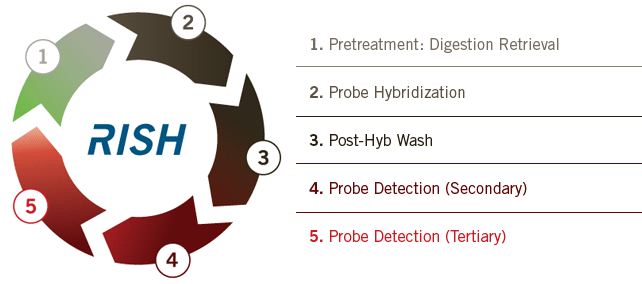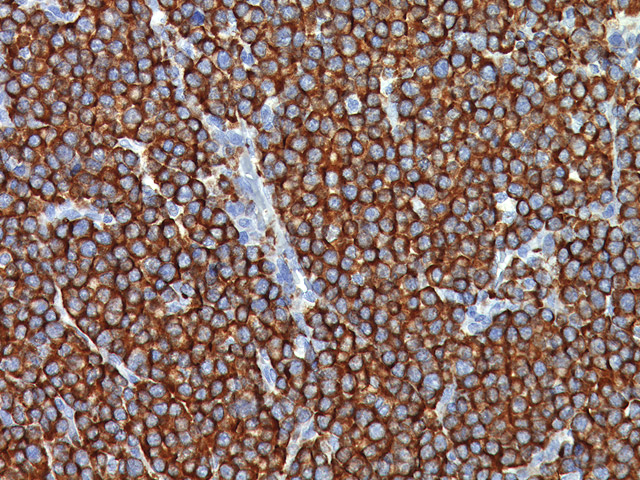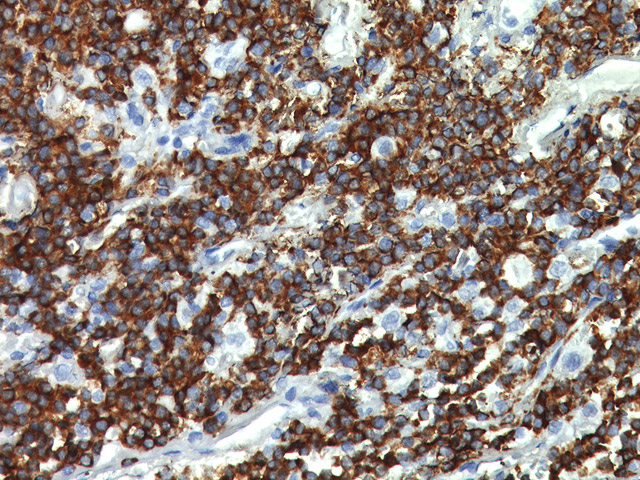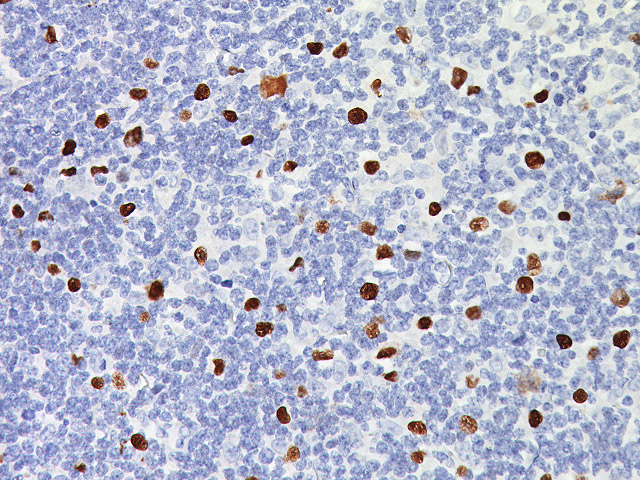RISH™
A simple in situ hybridization technology using proprietary DNA probes for rapid visualization of mRNA target expression.
The RISH™ probe technology, enables extremely stable hybridization with the mRNA target, resulting in a more abundant signal and conferring highly specific staining.
RISH™ Protocol Overview

The protocol has been simplified by removal of the overnight hybridization, requirement for RNase free solutions, labware and harsh stringent wash conditions resulting in a procedure that is completed in approximately 2.5 hours.
The result is clear, with virtually no background; the chromogenic signal is easily visualized under brightfield microscopy, along with the tissue morphology on a single slide.
- Rapid – Results in approximately 2.5 hours
- Simple Procedure – 5 step protocol is as simple as IHC
- Sensitive – Proprietary DNA technology designed for enhanced sensitivity & specificity
- Easy – Simultaneously evaluate gene expression and tissue morphology
- Archivable – Chromogenic signal is stable for extended storage
Immunoglobulin Light Chains – Kappa and Lambda
- Differentiate immunoblastic reactions related to viral infections, such as mononucleosis, from lymphoid tumors
- Used in the study of monoclonality of lymphoid tumors, lymphoproliferative syndromes, myelomas and immunodeficiency associated lymphoproliferative syndromes
- Diagnose mono- or polyclonality in lymphoid tumor proliferation or reactive processes
Lambda Light Chain
Staining bone marrow myeloma of the neck

Lambda mRNA may be detected in normal and neoplastic B-cells in human lymphoid tissue. Restriction of either Kappa or Lambda mRNA denotes monoclonality of lymphoid neoplasms and is useful in distinguishing between neoplastic and reactive lymphoid proliferations.
Kappa Light Chain
Staining bone marrow plasma cell myeloma

Kappa mRNA may be detected in normal and neoplastic B-cells in human lymphoid tissue. Restriction of kappa mRNA denotes monoclonality of lymphoid neoplasms and is useful in distinguishing between and reactive lymphoid proliferations.
EBER (Epstein-Barr virus Encoded RNA)
Epstein-Barr Encoded RNA (EBER) Probe – Staining Hodgkin’s Lymphoma

The EBER digoxigenin labeled probe is intended for the detection of EBER RNA in cells infected by the Epstein-Barr virus, both in reactive and tumoral cells. This detection is carried out by in situ hybridization in formalin-fixed paraffin–embedded (FFPE) histological sections.
- Detects Epstein-Barr Virus in Reed-Sternberg (RS) Cells
- Used as a tool to diagnose nasopharyngeal carcinoma
- Used as a tool to diagnose infectious mononucleosis and lymphoid/non-lymphoid tumors associated with Epstein-Barr viral infection
Cytomegalovirus (CMV)
Staining CMV infected lung cells

The Cytomegalovirus (CMV) digoxigenin labeled probe is intended for the detection of CMV DNA and β2.7 RNA in tissues and cells infected by the human Cytomegalovirus.
- Detects CMV genomic DNA & mRNA in infected tissues or cells
- CMV is a member of the human herpes virus-5 (HHV-5) group transmitted in breast milk, during organ transplantation, sexual activity or blood transfusions
RISH™ Control Probes
RISH™ Ordering Information
Product
| Cat. No. | QTY | ||
|---|---|---|---|---|
 |
6082 |
|
||
|
|
RI0213KG |
|
||
|
|
RI0011T |
|
||
|
|
RI0207KG |
|
||
|
|
RI0210C |
|
||
|
|
RI0209M |
|
||
 |
0001 |
|
||
    |
OPPR0001 |
|
||
    |
0004 |
|
||
    |
OPPR0004 |
|
||
    |
0005 |
|
||
    |
OPPR0005 |
|
Detection Kit Components
| RISH™ Detection | Volume |
|---|---|
| RISHzyme™ Buffer | 6 ml |
| RISHzyme™ | 6 ml |
| RISH™ Secondary Reagent | 6 ml |
| RISH™ HRP Tertiary Reagent | 6 ml |
| Betazoid DAB (Diaminobenzidine) Chromogen | 0.25 ml |
| Betazoid DAB Buffer | 6 ml |
| DAB Sparkle | 6 ml |
* RISH Dual Detection Kit includes Vulcan Fast Red chromogen, buffer & additional mixing vial

